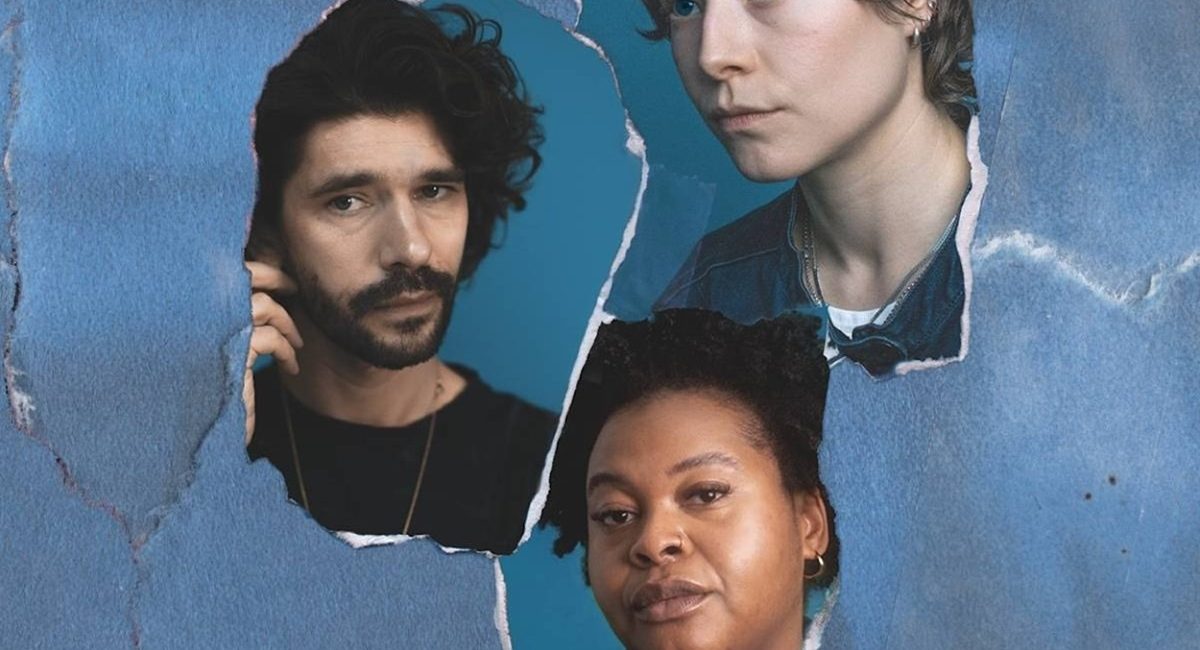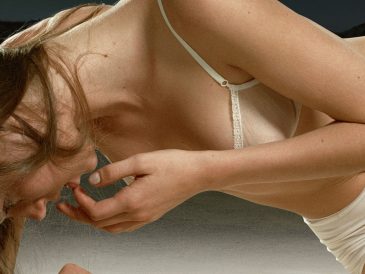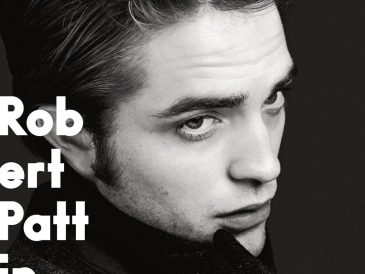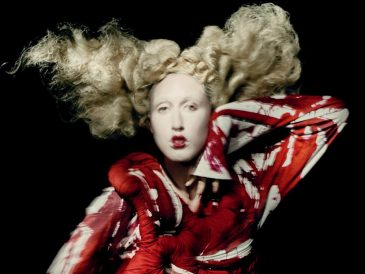Lead ImageBluetsCourtesy of Royal Court Theatre
First published in 2009, Maggie Nelson’s Bluets is famously uncategorisable – or at least difficult to describe succinctly. The first of its 240 numbered paragraphs introduces an abstract idea: “Suppose I were to begin by saying that I had fallen in love with a colour.” What follows is an incredibly evocative hybrid of poetry and prose in which Nelson – who interviewed Cate Blanchett for our Spring/Summer 2023 issue – explores heartbreak, pleasure, pain, sex and profound loneliness. The colour blue becomes her constant companion, which allows her to communicate with artists who have centred it in their work, including Derek Jarman, Billie Holiday and Joni Mitchell.
Bluets isn’t just a unique piece of literature, but also one that people care deeply about. Kristen Stewart has called it “the most achy book” she’s ever read and given a copy to “a thousand people”. For all these reasons, adapting it for the stage is no means feat. Originally developed in 2019 at Deutsches Schauspielhaus Hamburg, the new production coming to London’s Royal Court Theatre this month is directed by Katie Mitchell, whose visionary “live cinema” technique lets the audience watch a film being made on stage in real time.
The London Bluets has a brand new script by Margaret Perry, who has sculpted Nelson’s book into a one-act play performed by three actors: Kayla Meikle, Emma D’Arcy and two-time Another Man cover star Ben Whishaw. Each will appear on stage expressing the author’s innermost thoughts. “It’s the first time I’ve adapted something without adding any of my own text,” says Perry, whose work has been staged in Dublin, Edinburgh and London. “But we’ve still only used a fraction of Nelson’s text – I’d say 15 per cent.” Unusually, Perry has been on hand throughout rehearsals to make tweaks. “Sometimes I’ve assigned a line to a particular actor and because of what they’re doing on stage – with props or the camera – they can’t get to the microphone. So then we have a conversation about whether that line can be said by someone else,” she explains.
Turning Bluets into a dynamic piece of live cinema is such an intense and technically challenging process that Whishaw admits the three actors are “a bit braindead” when I meet them backstage at the Royal Court. They’re on their lunch break and buns and coffee are today’s sustenance. Because they’re all playing the same character, Whishaw jokes that the trio “might start completing each other’s thoughts” in this interview. This doesn’t quite happen, but they’ve clearly formed a tight bond while bringing Bluets to life.

Nick Levine: How would you describe the structure of the play? How do the three of you interact on stage?
Ben Whishaw: Well actually, we don’t!
Emma D’Arcy: The three of us play a single character. We’re sort of like three islands surrounded by a load of tech. As Katie [Mitchell, director] describes, this is “live cinema”, which is a form she pioneered in 2007. It essentially involves the sort of mechanics of screen production taking place on stage – live and visible to the audience – while the quote-unquote “complete work” is projected above.
Kayla Meikle: What I’m telling people is that it’s like a behind-the-scenes experience of watching artists and technicians create a film. While you’re experiencing all the making and crafting that goes into that, you’re also able to look up and see the end product.
NL: It sounds like a unique piece to work on – you’ve been in the auditorium from the very start, rather than beginning in a rehearsal room.
ED: It’s sort of a back-to-front process. We started with tech before any other parts of production, and now we’re working our way back to the text from a quagmire of technology.
BW: It’s like a very complex piece of choreography, but on top of that you have the actual text. There’s sort of two or three layers of stuff to memorise, so it’s definitely juicy.
KM: What was it you said the other day? That there are three things to master at once.
ED: Doing, speaking, listening. Juggling two at the same time is hard enough, but hopefully by the end of rehearsals we’ll have the triple threat!

NL: When you signed up for the play, did you have any idea how it might work?
KM: We didn’t know. And it’s been constantly evolving during rehearsals.
ED: I think it’s an experiment – specifically in what it means to try and theatricalise interiority, which is famously hard to stage. But I think this project is made up of people who share a curiosity about how to do that – it’s a running thread in Margaret’s work. This play poses really interesting questions like, “How do you bring an audience close?” I don’t know the answer yet, but it’s a really rewarding investigation.
BW: I had that curiosity [at the start], and it’s been lovely working with these two to figure it out. Because actually, we’ve become a real company now. We’re cooperating as one with such a level of love and trust.
What would you say is at the core of this story – solitude and heartbreak?
ED: Grief.
BW: Obsession.
KM: What struck me when I read Bluets is how honest [Maggie Nelson] is about her loneliness. I think feeling lonely in a city is a very particular experience that she really captures. Also, I loved the sex in the book. I was really struck by how she talks about the experience of having sex with someone in order to make them see you. I think she does that really well and I hope that we as actors can give that [feeling] to the audience.
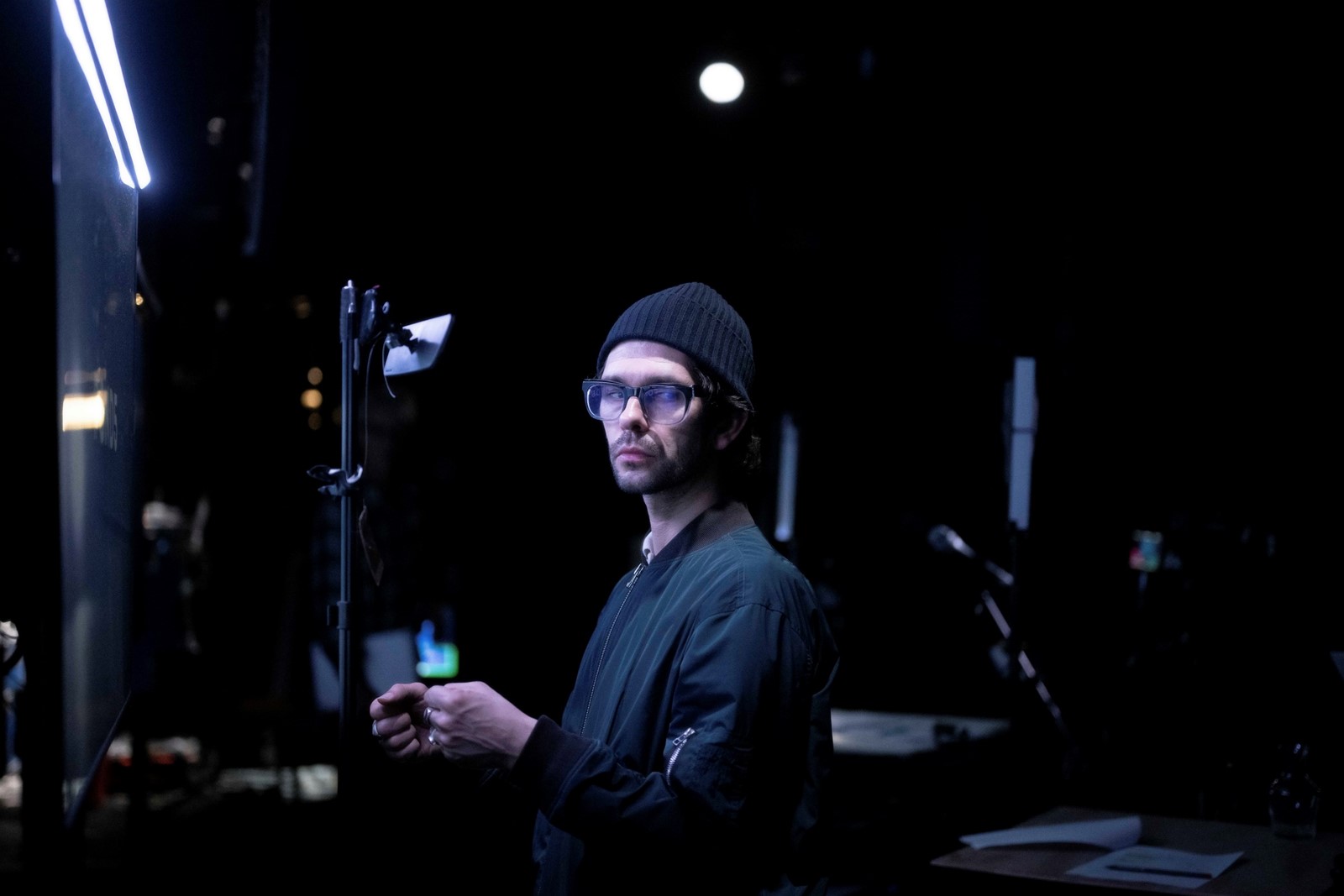
NL: Do you have any inkling what audiences might take away from it? Or is it too soon to tell?
BW: I think it’s not a usual kind of play, but even when I get a bit lost and can’t see where we’re headed, I feel excited by the fact that it’s not traditional. I love traditional plays, but this is something new.
ED: Which feels right, because Maggie Nelson’s book is something new.
KM: Exactly. And I just hope people get whatever they need to get from it.
ED: There’s a lovely thing Nelson says in the book, which is that loneliness is solitude with a problem. So, like, how does one convert loneliness – this great absence – into something resolved like solitude? I think that’s something the book is grappling with and we are too. Part of what Nelson describes is looking for companions in the world and [the colour] blue becomes a companion for her. Mags [Perry] said something nice, which is that this play might offer some companionship to lone audience members. Maybe there’s a kind of companionship in talking communally about loneliness.
Bluets is on at Royal Court Theatre in London from May 17 to June 29.

